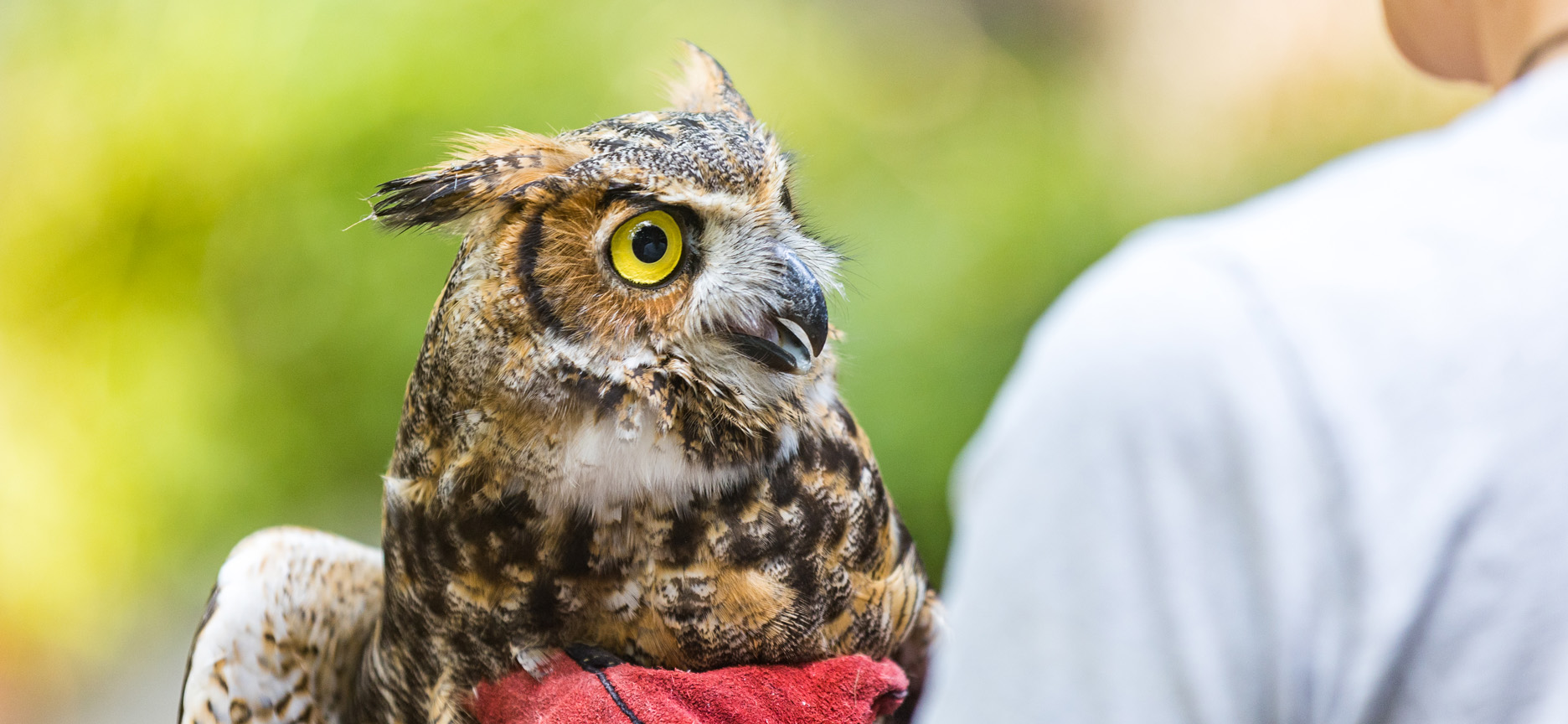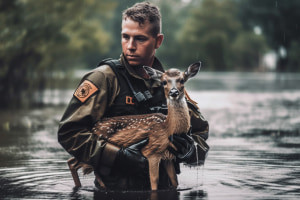The Role of Humane Wild Animals Removal in Protecting Citizen Ecosystems
Humane wildlife removal is not simply an ethical factor to consider but a pivotal element in securing neighborhood ecological communities. By focusing on non-lethal methods, it deals with the delicate equilibrium between human growth and wild animals habitat preservation. This strategy not only mitigates problems however additionally makes certain the sustainability of biodiversity. Yet, the effectiveness of these techniques warrants even more examination, specifically in urban setups where human-wildlife interactions are increasingly complex. As we contemplate the effects of our approaches and their effect on ecological harmony, one should question exactly how these practices can be optimized to cultivate a much more symbiotic relationship with nature.
Comprehending Human-Wildlife Problems
Human-wildlife disputes usually emerge when the all-natural habitats of animals intersect with human tasks, causing competition for sources and space. As urbanization and agricultural development remain to intrude upon wild animals areas, animals such as prairie wolves, raccoons, and deer find themselves in closer distance to human populaces. This distance can result in detrimental influence on both wildlife and humans, as pets might cause damages to plants, facilities, and individual residential property while humans might inadvertently harm wildlife through habitat damage and other anthropogenic stress.
The intricacy of these problems originates from a variety of aspects. Modifications in land use, environment change, and the fragmentation of environments typically force wild animals to adjust to new atmospheres, in some cases leading them into industrial or household locations. Furthermore, the schedule of human-generated food sources, such as garbage and family pet food, can draw in wildlife to human negotiations, exacerbating communications and potential disputes.
Attending to human-wildlife conflicts requires a nuanced understanding of animal habits, environmental dynamics, and socio-economic factors to consider. By studying these communications, guardians and policymakers can develop approaches that intend to alleviate disputes while protecting biodiversity and preserving environmental equilibrium. The goal is to promote conjunction and decrease damaging influence on both human neighborhoods and wild animals populations.
Significance of Non-Lethal Techniques
Non-lethal techniques of wildlife removal embody this principles by giving options that avoid injury to wildlife while addressing human problems. By utilizing such strategies, we can take care of wildlife interactions without resorting to deadly procedures, consequently protecting animal populations and lowering honest issues linked with murder.
Non-lethal methods are critical in keeping environmental balance. They make sure that types continue to satisfy their functions within ecosystems, such as controlling bug populaces or cross-pollinating plants. Additionally, these methods typically show much more efficient in the lengthy term, as removing private animals can develop a space that is swiftly loaded by various other members of the species or different types altogether. This can lead to a cycle of continuous elimination efforts, whereas non-lethal deterrents attend to the source of wild animals visibility.
In addition, non-lethal methods foster coexistence by educating the public regarding wild animals actions and motivating harmonious living techniques. This awareness can bring about a lot more lasting human-wildlife interactions, eventually guarding both neighborhood passions and pet well-being.
Advantages for Biodiversity
When non-lethal wildlife elimination methods are utilized, they add substantially to biodiversity conservation. By making certain the risk-free relocation of animals instead than their removal, these approaches maintain eco-friendly balance and protect the honesty of ecosystems. Humane strategies lessen disruptions to neighborhood animals, permitting native species to prosper. This conservation is critical as each types plays a distinct duty, frequently as pollinators, killers, or target, which collectively sustain community functionality.

In addition, these techniques foster conjunction between human beings and wild animals, lowering adverse interactions and maintaining the abundant tapestry of life that defines biodiverse areas. This strategy urges a much deeper understanding and regard for wildlife, promoting area support for conservation efforts. Inevitably, humane wildlife elimination is an important component in securing biodiversity, ensuring environments remain vivid and useful for future generations.
Techniques for Effective Removal
Carrying out effective strategies for humane wild animals removal needs a comprehensive understanding of pet habits and environment demands. This understanding works as the structure for establishing methods that make certain the moral and safe Find Out More relocation of wildlife. One main method includes performing extensive assessments of the affected area to recognize the species present and the certain challenges they present. This evaluation helps in designing tailored approaches that minimize stress and anxiety and injury to the pets.
One more vital technique is employing exemption strategies, which concentrate on top article sealing entry points to prevent pets from going back to frameworks. This technique not only deals with the instant concern however also works as a lasting solution, decreasing future problems between human beings and wildlife. In addition, using safe deterrents and repellents can urge pets to leave areas voluntarily, enhancing other elimination initiatives.
Capture and relocation should constantly be a last resort, employed just when animals posture a direct hazard or are unable to leave by themselves. In such situations, making use of humane traps and making certain the release of pets in appropriate environments are necessary to protecting their welfare. Collaboration with wildlife experts and adherence to legal policies even more improve the effectiveness of these approaches.

Supporting Coexistence in Urban Locations
Promoting coexistence in urban areas requires a diverse technique that stabilizes human growth with the demands of neighborhood wild animals. As urbanization continues to increase, it is essential to apply techniques that reduce human-wildlife disputes while preserving biodiversity. Urban policymakers and planners need to incorporate green areas, such as parks and wildlife hallways, into city layouts to provide habitats for native species. These areas not only support wildlife yet also improve the quality of metropolitan life by enhancing air top quality and offering entertainment rooms for homeowners.
Education and understanding campaigns are critical in promoting a society of coexistence. Residents require to recognize the importance of wild animals and the role they play in neighborhood ecosystems. Workshops and informative sessions can gear up neighborhoods with expertise on just how to decrease disputes, such as protecting trash and making use of gentle deterrents to stop wildlife breach.
Moreover, modern technology can play a considerable function in promoting conjunction. Using wild animals monitoring next page systems, as an example, can aid track animal activities and notify city planning choices. Cooperations between environmental companies, city governments, and community groups can better strengthen these efforts, making certain that urban development progresses sustainably while respecting the ecological equilibrium.
Conclusion
Humane wild animals elimination is crucial for keeping ecological equilibrium and biodiversity by utilizing non-lethal approaches that lower damage to pet populations. Ultimately, advertising coexistence in urban locations cultivates a harmonious connection in between humans and the all-natural atmosphere, making sure lasting ecological communities for future generations.
As urbanization and farming growth continue to elbow in upon wildlife territories, animals such as deer, prairie wolves, and raccoons find themselves in closer closeness to human populations. Non-lethal techniques of wildlife removal embody this ethos by giving solutions that protect against damage to wild animals while attending to human problems. By using such strategies, we can manage wildlife interactions without resorting to lethal measures, therefore maintaining animal populaces and decreasing ethical concerns linked with murder.
Implementing efficient techniques for humane wildlife elimination calls for a thorough understanding of animal behavior and habitat needs.Humane wild animals removal is important for keeping eco-friendly equilibrium and biodiversity by employing non-lethal methods that decrease damage to animal populaces.
Comments on “Efficient Approaches for Animal Control Burlington: Keeping Your Property Safe”